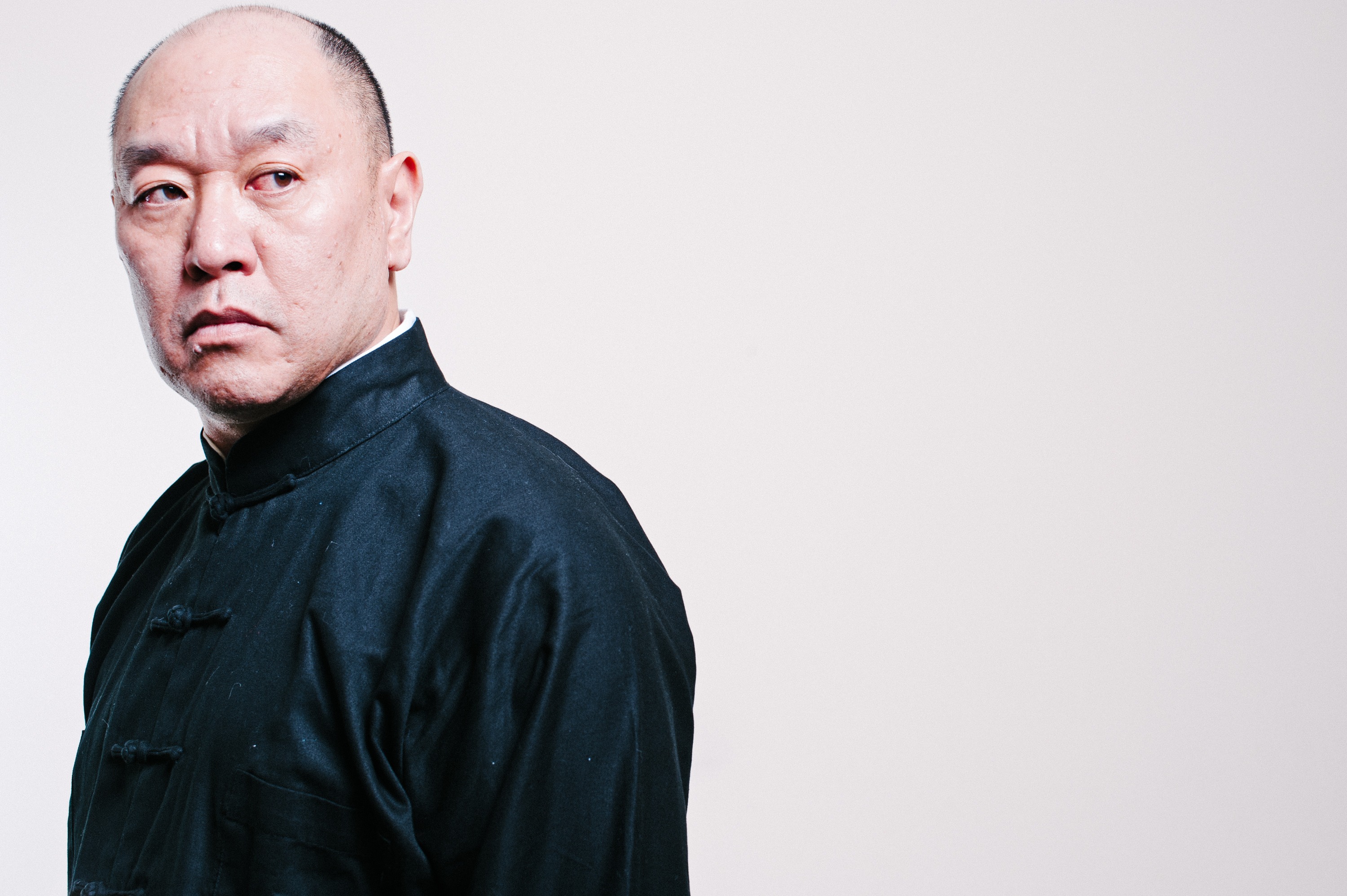
These days, Robert Chu is a name that cannot be separated from the world of Wing Chun Kuen. Not only is he a master teacher of this style, but one of its foremost researchers and educators. He has co-written with Rene Ritchie, Complete Wing Chun, which is one of the most comprehensive books on the various histories of the art. He has been working on his opus on the physical analysis of the art, The Essence of Wing Chun Kuen. He is a featured columnist in Wing Chun Illustrated, and has written in previous martial arts journals. He teaches his version of the art to students around the world.
In this exclusive interview, Robert speaks directly at the Wing Chun community to shape up their act, be more responsible with the information they are perpetuating, and discusses the research that went into his seminal books.
Robert, people generally think of you as a Wing Chun practitioner, but your martial arts background is quite diverse. Would you share with us a little about your background?
Sure. I have been involved in martial arts for 48 years. For the past 42 years I have been concentrating on Wing Chun. Prior to that, I studied hard styles like Shaolin and Hung Gar. I have also studied Yang and Sun styles of Tai Ji, Xing Yi, Ba Gua, Lama, and Bak Mei gung-fu. I was also fortunate enough to study with Lui Yon Sang and inherited his teachings of the Fei Lung Fu Mun martial arts that specializes in the spear and pole. I am also a practitioner of Okinawa Shorin Ryu Karate Do, which I have studied since childhood.
Regarding Wing Chun, I know that you have studied multi-lineages of the art. Why did you feel the need to study various versions rather than sticking to one style and one teacher as is the norm?
I look at Wing Chun as one family, despite the lineages that all clamor as to be unique. If they all share the name “Wing Chun,” it means that each version has more in common than differences. To see what my martial arts cousins learn and how they express their art does much to enrich my understanding of the art as a whole. In China, when you studied a martial art, especially at advanced levels, you went to visit other relatives in your system, visited with masters of other systems, discussed and shared different points of views, showed applications, and read classics of other martial arts.
What do you see as some of the more overt differences in the practice and application of Wing Chun between the various lineages?
All teachers have their strong points. Certainly everyone says they’re the most ancient, original, traditional, authentic, secret, or whatever, but that is just hype and marketing. It makes people put on blinders and think what they have is the best. To me, “original” is what you start out with, but not what you necessarily end up with. After all, practitioners constantly refine and modify their practice as their knowledge increases.
Chinese martial arts are taught, to have “Tai” (Structure) and “Yung” (Application), they both feed off each other to make improvements in each generation. Martial arts are always evolving, if not, they get obsolete. You get obsolete from lack of understanding in application.
Wing Chun is not “Ancient”; that is relative. The earliest evidence of WCK is probably from the 1840’s, just a drop in time’s bucket.
Martial artists have a lot of hype, and we should look at a system taking you from ignorance to wisdom.
I look at Wing Chun people passing down the art as they interpreted it and sometimes with that direct transmission, certain points may not be emphasized as they are in another branch or teacher. I could say more, but to sum it up: each teacher of Wing Chun has a unique feature and way that the knowledge is transmitted.
Your book, Complete Wing Chun, offers the many histories of the art as told by the varying groups that spread the art around the world. What prompted you to write such a book?
Complete Wing Chun came about when my good friend, Rene Ritchie, suggested that I work with him regarding a book on multi-lineages of the Wing Chun system. But since its going into publication in 1999, much information has come out. If I were to do it again, I’d weed out some of the “fake” lineages in the book, and add some other lineages. For example, I would write about the Yik Kam Siu Lin Tau system, Weng Chun system, Vinh Xuan from Vietnam, Sae Hoc Wing Chun from HK, and correct a chapter on SE Asian WCK. Some of the stuff you see today are modern interpretations of what was taught.
For example, Yuen Chai Wan’s WCK became Vinh Xuan in Vietnam and deleted many elements like Chum Kiu and Biu Jee, added in animal forms, and other elements of weapons.
With so many lineages in addition to the well-known Yip Man school, who do you think created Wing Chun or has the most pure representation of the original idea of the art?
Both before and since Complete Wing Chun’s publication, I have given much thought to this question. There are several theories, but nothing that can be considered fact. As I am Chinese, we always have two sayings: 1) “Don’t mislead future generations” 误 导 下 代 , and 2) “Pass on WCK properly” 詠 春 正 教. . We have to be very careful in how we phrase things so we don’t mislead future generations. And we have to acknowledge what our ancestors passed on to us, before we create something new.
Any serious scholar rejects the thought that Ng Mui and/or Yim Wing Chun founded the art, as they were fictional characters, perhaps based on local heroes. However, the fairy tale of a young woman empowered to fight off a local bully is very romantic in selling the art.
Based on the research I did these characters are probably more fictional than factual. Tan Sao Ng might have been the founder of Cantonese Opera, the time frame between him (1730’s) and Wong Wah Bao (1850’s)—about 120 years—is too great for him to have transmitted the art directly to the Opera people. There have to be generations in between. Trying to pull in Qi Ji Guang (1560’s) and Tang Sun Zi (1550’s) is too big of a stretch. We can say they described something “Wing Chun like” of a close body short striking system, but nothing that is exactly in the format we train in today.
To relate “Cotton” Zhang’s (Zhang Heng Qiu) fist art, is a long reach. Although Qi Ji Guang recorded the existence of “Mian” (Cotton) Zhang Short Strike 绵 張 短 打 in his Fist Canon from 1560, we do not know exactly the contents of that particular art, nor the forms taught from that period. We cannot say it is exactly as Mr. Jiao Jian Guo teaches today in Beijing. Without learning it directly in person, comparing the methods, we cannot say that “this is WCK’s ancestor”, again going back to “not misleading future generations”.
WCK has some pieces of Emei Shi Er Zhuang, as evidenced in their Xiao Zi Zhuang set, and some Fujian White Crane, as evidenced in Lee Kong’s Shi Er Jie Li Quan, but it is the fusion we are interested in, not these mother systems, as they are also “Wing Chun like”, but not WCK. These arts have an old history and have undergone revision, over generations. We cannot just “jump to conclusions” based on a paragraph here, a sentence there, as clues, as this is misleading. We cannot be arrogant enough for letting future historians judge, as there are enough contemporary historians which can judge right now, given the evidence.
Also, we cannot say get rid of “this stance” or “that Bong Sao” unless you have put it to test and understand the context it is used in. Also people making comments about WCK’s Bai Jong position, one really studied WCK formally, they understand the concept of Mun Sao and Wu Sao, is not to be confused with the technique example. That is the Real “Bai Jong” on guard- formless – one hand is real, one hand is defending, and can strike from any position. So when people argue of an “on guard”, I suspect they didn’t study WCK, or understand. I find that people who insist their way is the only correct way, and we’re all doing it wrong causes problems.
I think in all likelihood, Wing Chun developed along within the same way as other Cantonese/Fujian southern fist systems like Hung Gar, Choy Lay Fut, etc. It was developed by people engaged in illegal activities and/or wanting to overthrow the Qing government. These people had code names to hide their true identities. In my opinion, then, I think the only Wing Chun elder we can really document and verify is Wong Wah Bao, Leung Yee Tai, Fok Bo Chuen, and Yik Kam. Someone must have taught them, perhaps it was Leung Lan Gwai. But did Leung Lan Gwai really learn from his uncle Leung Bok Tao, and adoptive aunt, Yim Wing Chun? We’ll never be certain. And who was this Ng Mui who taught Yim Wing Chun? Was she really a nun at Shaolin? It sounds ridiculous. These are typical Chinese historical dilemmas. So people can only speculate and have what our elders passed on to us. We can say, we simply don’t know 100%, and be logical about it.
Mark, even in my lifetime, people that I know, or know of, have exaggerated stories and embellished them. Their histories are remade to market their art, or branch of the art. They’re kind of like the Ip Man or Wong Fei Hung movies – they have an ounce of truth in them, then tons of embellishment. This has gone overboard for the sake of marketing.
We do, however, have to acknowledge the Opera people and the King Fa Wui Goon people, of their involvement in the anti-Qing Tai Ping Heavenly Kingdom revolt which led to the development of WCK, and our ancestral home in Foshan, China.
Your articles and columns seem to focus on the teacher/student relationship as well as fighting theory. Why?
When I first started Wing Chun, I had a teacher that taught with a lot of outdated secrecy, had a special high disciple fee, taught behind curtains, had secret oaths, secret “thumb” gouge, and considered regular students as “nothing”, and always withheld the higher level information from them. I didn’t like that feeling.
When I learned anything in school, I thought martial arts should be like any other educational endeavor: the teacher should give the mindset, knowledge, and work for the student to succeed. When I saw that teachers would deliberately hold back their teachings, keep their students down, and not truly give what they said they were giving, and that people were getting something less than what they were expecting, I felt this wasn’t right. Since then, I’ve managed to overcome these roadblocks and I feel I owe it to those coming along the same path to share my experiences and hopefully help them avoid the same pitfall. That’s why I focus on the student and their seeking for higher knowledge.
Similarly, if a martial art is only for pleasure, and not function, what is its purpose? Of course it must be practical and have modern day application whether for sport, self-defense, or health.
Some say there is a modified and original style of Wing Chun. What is your opinion on this politically volatile issue?
People make their living teaching Wing Chun and like any commercial endeavor, they need marketing to support them, they need fancy stories to make the new students think they’ve found “the best most authentic teacher and system” on the planet. Those of us who have been in the art for a while and are familiar with its true breadth and scope smile at this. For example, a monument at the Shaolin Temple does not mean “Wing Chun is from Henan Shaolin”. These are examples of modern embellishments which mislead future generations.
Sometimes these people have strong personalities and they attract students who really want to feel they are unique or special. You start to see arguments and problems arising as teachers forget or start to believe their own hype and don’t properly discipline their students. You see that on all levels, of course. Personally, I think that is a marketing ploy, with some people just trying to differentiate themselves as being the most credible or closest to the source.
Here’s a popular Chinese style fable: “I was a sickly child and studied with Sifu. He saw something special in me, and I was the last student of Sifu before he died… since he was dying, he gave me the one and only true transmission. Sure, the forms look different, that’s because I am the only one with the secret teaching which looks different. My seniors did not get the true and genuine teachings. Only I did.” Every one of us has heard a variation of that story, and it’s quite common.
Again, it’s just marketing.
With this in mind, is there truly an “original” or “modified” Wing Chun, or merely a core set of universal principles every branch within the art expresses in their own way?
For me, I think it’s personal. You start out with as so-called “original” Wing Chun, which is your innocent, naive, carbon copy version of Wing Chun that you learn from your Sifu. This is the “Structure”. As you get older and progress through the stages of development, you become wiser and “modify” your Wing Chun according to circumstances. This is the “Application”. This is why I refer to my method now as “Structure and Application” of Wing Chun Kuen.
Wing Chun is expressed in your body and not from your mind. You do not fight from memory, you have to fight being in the moment. So those with only training from YouTube, following some character, they can learn something about a system, but without the physical, it won’t be in their bodies and is worthless. A close friend of mine, Dixon Fung, said, “YouTube is one of the best and worst things for martial artists – it can expose them as a fraud, and can show that there still good things that exist elsewhere.”
A lot debate on having the proper forms. In my opinion, forms are like textbooks. Some boast the first edition of a textbook, but ideally, later generations should have annotated, revised, updated and edited the information. Knowledge and wisdom grow and change with time, so with every generation, there can be revision and reform. One must take extrapolated tools out of the forms, then drill them to make the tools come alive and get one accustomed to utilizing the legs, torso and arms aligned in unison with varied steps and breathing. This is basic training to train and develop power and coordination.
So what is it about your version of Wing Chun that makes it different than the many other systems?
What makes anyone’s Wing Chun different? People may talk about this famous version or that awesome method, but at the end of the day, all you really have is your own expression, and we’re all unique in that. There is no one “system”, “Wing Chun West”, or “Wing Chun Asia”. All one really has is what they train.
For myself, it’s my systematic approach to teaching. I try to be very systematic and well rooted in the real world. You see, to me, style is how you express your training. A lot of teachers can’t teach, don’t know how to teach, and are just plain boring. They don’t have any rapport with students, charisma, demand “guru worship” – where you don’t question them, and really are not people persons.
It’s true in martial arts and in the world at large. Some teachers have good intentions, but just don’t manage to connect with a student; they are poor teachers. I like to make sure that I touch on as many different methods of teaching as possible so that, for example, those who are kinesthetically, auditory, or visually oriented, all find something to relate to. If a person prefers to learn hands on, I let make him feel it. If a student likes to see, I show him. If a person listens, I tell him. Some learn by combinations of these methods. You have to change your teachings so they can understand, not just “take it or leave it”.
The other thing is I prefer to teach concepts, not techniques, and principles, not theories. This way the system can grow in their generation.
So you’re saying that it is the method of imparting knowledge and the methods through which students absorb and train that knowledge that sets one system apart from another.
Right! Theories have to become principles. To me a theory is an idea, a guess—something that might work. Principle is a fact. You can do it, prove it so to speak. So, in essence, a student has to prove his martial arts training.
For me, techniques are just examples of concepts. If a teacher teaches you a technique, you still have to understand the context of a situation, otherwise it’s dead, just a single paint-by-numbers example. With a concept, you can create any techniques you need to fit the circumstances.
For example, a Wing Chun technique like Pak Da can be done in many, many ways. I teach at least 15 different ways to do this, which can be modified maybe 100 ways or more. What’s easier to teach though, one concept or 100 techniques? What’s easier for the student to remember? To use? In this way, rather than having a student memorize the techniques, I have them understand the concept so that they can create an effective technique from it in a time of need. There are other things too, of course. For example, I am also different in that when I teach in that from day one I emphasize body methods and footwork, with the hands.
I have found your famous “structure tests” to be useful and insightful. What is the point of creating these?
I created these “tests” as an objective means for beginners to feel the force transfer from a person pushing on you so that you understand and feel connection to the ground. It’s a means of slowing down what is happening, and what you should be feeling for kinesthetically. Some call this “bone structure alignment”, or “vector force alignment”, or “Force Flow”. The idea is the alive alignment, and feeling and adjusting. You are not a fixed robot, holding a pose. Most people have totally mistaken what I was teaching holding a rigid posture, or made a straw man argument of a mistaken term. They are not really addressing what I have in the tests, which is liveliness in alignment, given that the nature of combat is always changing.
For example, if one is suggesting that the WCK horse should be toes out, with weight in the back muscles, you have to objectively test it. Don’t accept anyone’s word for it. You must follow wisdom and functionality.
So many students on their first day of Wing Chun simply mimic the teacher, they don’t get to feel what should be happening to them. This goes on for many years and they find they can’t even do “test one” (a simple press on the sternum to see if you are rooted in the basic horse stance of Wing Chun). It’s a pity. I have seen practitioners with 20 plus years of practice unable to align their body to cancel out a vector force on their person. What does this say about the next generation of practitioners?
To me, body structure and application is the core essence of Wing Chun. If you don’t have it, your art, no matter how many fancy hands, theory, talk, is empty. If you have it, everything revolves around it, partner training, forms, wood dummy, weaponry, sticking hands. They are all extensions of that training. It’s what makes Wing Chun unique and how we generate power and issue force. I should also add, since some people seem confused by these “tests,” that they are, as I said, simple things for beginners. Like everything in Wing Chun, there is a whole process that comes after them.
Why do you think it is that so few people actually teach this aspect of the art?
Well, in one sense, I think many people came to this country with good intentions to share their Wing Chun, but were unable to. The problem is they may not be able to speak English, or borrow from here and there, and didn’t have knowledge of how motion and the other elements are explained in a Western manner to properly convey their ideas. Others, as I said earlier, might simply not have the knack to teach, or may even have preferred to teach the exact same way they were taught, regardless of circumstances. Similarly, there can be problems with students as well. As the system has spread, many students have perhaps been told they have the correct transmissions and have been encouraged to teach too early.
They may not really understand yet what they’ve learned, and have not adequately received tuition. Wing Chun is not some art that you pose with, the stance taught to you from day one is a means of conveying power into your hand, torso, and leg movements. You need to know the system well, however, before you can teach it. You need the experience in application and get perspective the later elements give you in order to understand how the early elements really integrate.
As you may guess, I’m all for quality control in the art. I’m not sure how we’ll achieve it yet, but I think we owe it to the art to make sure the correct teachings—regardless of personal interpretation—are passed along to the next generation of Wing Chun practitioners.
How long do you think it should take a beginner to learn WCK?
Personally, it depends on the individual. Basically, they can learn Wing Chun, which has a pretty short curriculum, in two to three years. Now, of course, mastery is different. To master the art, one should know all the forms, individual movements, terminology, weaponry, applications, sensitivity training, body structure, changes, principles and concepts of the system, and also be able to show and prove all of that. It is a stage of constant refinement.
My opinion is that martial artists go through three stages. The first is the “fixed stage.” They really don’t know how to apply the art and essentially, the student is fixed in his knowledge. He’s robotic, even mechanical, in his movements and thought. Over time, he reaches the second stage, that is, the “lively stage.” With this, the practitioner becomes more fluid in his movement, and has a better understanding of his mechanics, but may not be able to adapt to changes yet. They are still mechanical, but better. The third stage is what I refer to as the “changing stage”, wherein the martial art is “alive” through the expression of the practitioner, who can adapt the art to all circumstances. Regardless of style or system, I think all high level people go through these stages of development.
What ways have you found that enable students to transcend the first two stages and move into the third to finally master the art?
Well, mastery is when you learn all aspects of the system. All of the forms, drills, partner drills, weaponry, fist principles, internal training and the like. They make this all alive, with personal expression and the art is second nature to them. The art is natural, embodied in their nature. It is spontaneous in the moment with feeling and adapting to circumstance. It holds up under stress. This is the stage of the where the masters, past, present and future are at.
I understand you specialize in the weaponry dimension of Wing Chun Kuen, Why?
Weaponry also imparts many additional attributes, such as strength training and issuing force through an object. It is a way to develop wind and strength with an external apparatus.
Wing Chun’s weaponry was adapted when ancient Chinese weaponry was phasing out and modern weaponry began to be more important. I think the Wing Chun ancestors saw the benefits of attributes training with the weaponry in hopes that future generations can still enjoy the trained strength that weaponry develops. The pole teaches the use of the body with up, down, in, and out motions. The knives serve to strengthen and unify the body and improve gripping and striking. Also, knives will always be a common available tool for self-defense.
Many suggest Wing Chun as not effective, or degenerated. Some say they want to reform it. What do you think?
Mark, this is a lot of hype, too. It depends on the one criticizing it. Did they really study WCK? What source? What type? How long? Do they really have experience in the art, or just a cursory look from an outsider’s point of view? WCK is not Kyokushin or Muay Thai, it has it’s own elements for application. WCK is also not long range fighting.
WCK’s specialty is the “attach to body short striking” method. It is intermediate from long range and taking down opponents.
Although some would never has guessed, many believe Wing Chun to be one of the so-called “internal” arts. Is this really an issue?
(Laughs) Oh, more silly stuff! Wing Chun developed in the Opera, independent of those labels and terms like “neijia” (inner school) and “waijia” (outer school). Somehow, people still think the term “internal” (incorrectly) refers to Tai Ji, Xing Yi, or Ba Gua, Liu He Ba Fa, and other such systems—none of which, of course, are even actually related to this original Huang Bai Jia Neijia Quan. One can speculate the misnomer got applied in the Central Gou Shu Guan by Sun Lu Tang and others who tried to differentiate their styles from Shaolin. To say that Shaolin is hard, and neijia is soft—well, I think people seasoned in both would find that also ridiculous.
Personally, it’s like the terms “original” and “modified,” I think the difference between neijia and waijia is dependent upon the level of the practitioner. In high levels, Wing Chun practitioners should use their bodies skillfully and avoid using tension and localized muscles. In that sense, Wing Chun could be considered a “neijia.” But even this is ridiculous, as all arts should teach body usage. However many these days are just borrowing from here and there.
Of course, there are so many definitions of the terms neijia and waijia, it’s not worthwhile to really clarify them here. Some say that Shaolin is waijia because it is Buddhist, a tradition that stems from outside China, but as I understand it, Wing Chun was not developed in Shaolin as some people say, so that really doesn’t apply either.
The problem is today, many people add in many elements from other systems like Emei 12 Zhuang, White Crane, Shaolin, Tai Chi, Xing Yi, Qi Gong, Ma Li Tang, Southern Mantis, Yi Quan, training exercises from here and there, and the like to fill this meaning of “Internal Wing Chun”. In sum, we should just call that “more marketing” and “pouring old wine into new bottles”.
When all is said and done, what do you think is the true goal of training in Wing Chun Kuen?
I value teaching Wing Chun as an art to understanding the “center”. It is a recurrent theme in the system. One has to be balanced spiritually, mentally, emotionally, physically, so I think that is the goal of Wing Chun training. You can easily see when people are unbalanced – they make demands, don’t allow you to question them, try to assert control, don’t let you have your say, and other controlling things. That is based on fear.
Wing Chun started out late in the development of martial arts. In my opinion, the art took the refined essences of different martial arts and stressed the functional, rather than the flowery. As time went on, the recurring essence was simplicity, directness, and economy of movement. All systems contain Wing Chun in my view, as when an artist practices Shaolin to a high level for example, they are expressing Wing Chun—that is, the simple, direct, and economical manner of movement. If you have an art stress that along with transitional movement, what you have is Wing Chun.
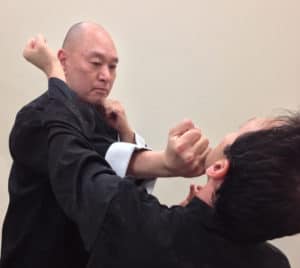
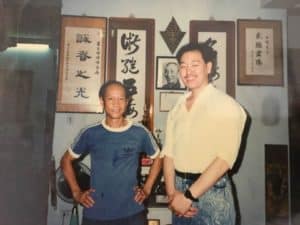
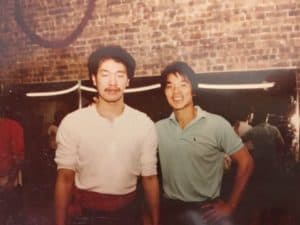
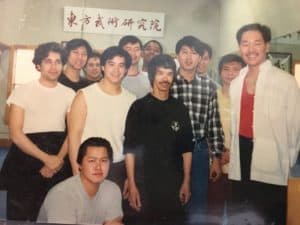
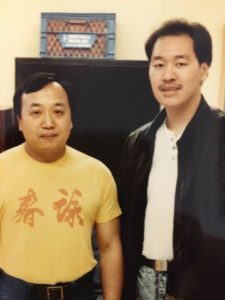
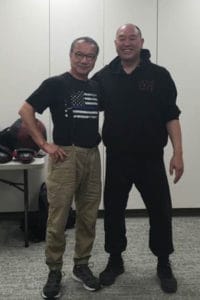
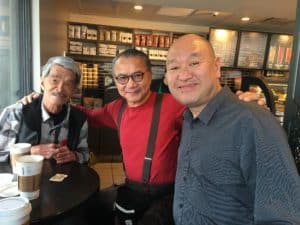
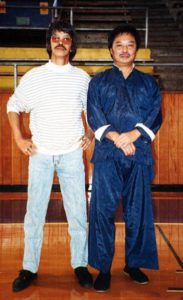
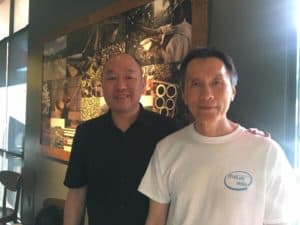
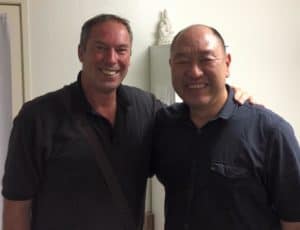
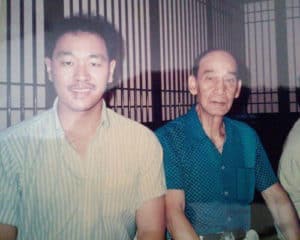
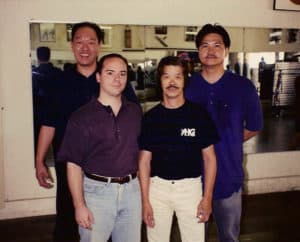
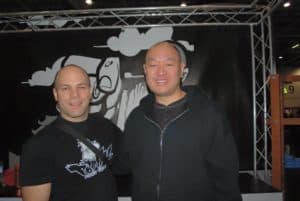
0 responses on "Robert Chu: In Search of Wing Chun’s Truth - Updated"